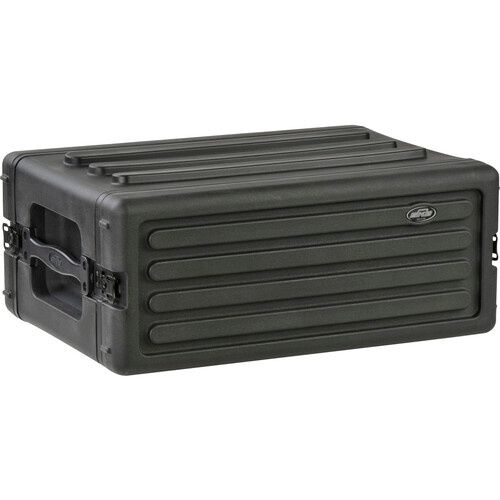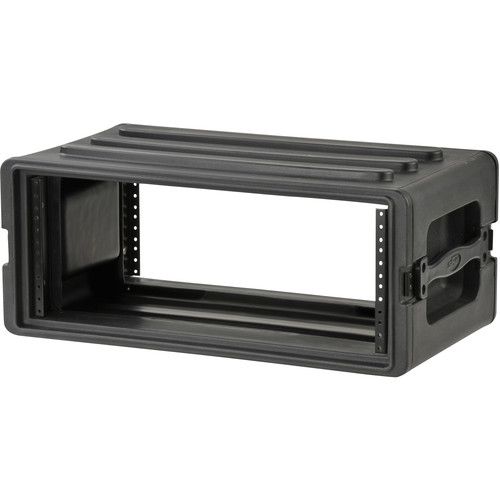The Portable Repeater Project - Case
Since the Portable Repeater will be, well, portable, it will need to be in a case of some sort that will protect it from the heartache and thousand natural shocks that portable equipment is heir to. If the repeater is deployed to support some event, it will probably get transported in the wayback or trunk of a car. If it’s deployed in anger during some disaster, it will probably see much rougher transit than that, perhaps banging around in the bed of a pickup or the back of a jeep.
Lynn N7CFO has a portable repeater which is the inspiration for mine. His is two Motorola radios, stacked one atop the other, with two low power mobile duplexers stacked underneath the radio. This makes it a delightfully compact unit, as there’s essentially no wasted space. I have some worries about how it would fare in terms of heat dissipation under heavy use with everything packs so densely, but perhaps I’m paranoid on that score. 
Anyway it turns out I have an SKB 4u shallow rackmount case and two 1U shelves to fit, and I’m thinking that for the first round at least, the repeater will live in this rackmount case. The SKB case is fairly lightweight, nearly bulletproof, and will allow easy access to connections to the various bits of the repeater. Later on, when I feel like I have all the issues sorted out and I know what the final configuration will be, I’ll see if I think there’s a need to make a more custom case that is perhaps a little more compact.
But for now, my experience is that I only make progress on things in fits and starts, and it’s better for me to proceed with the things I have on hand which I know will cover the main issues, and for me to defer sorting out minor details until I’ve made my usual abundant mistakes and midcourse corrections. 
So the arrangement I’m envisioning looks a lot like this…
Upper Shelf:
- Alinco DR-435T mk III radio (repeater receiver)
- Alinco DR-435T mk III radio (repeater transmitter) probably with some fan fitted to move air over the heatsink
- repeater controller, so that the audio cables to the receiver and transmitter need not go from upper to lower shelf
- Power distribution and perhaps a small 13.8v power supply
And then on the lower shelf:
- 50W mobile duplexer tuned to 440 MHz receive / 445 MHz transmit
- 50W mobile duplexer tuned to 443 MHz receive / 448 MHz transmit
So the setup process will be to pull the front and rear covers off the rackmount case, move the coax antenna connections from the radio transmit and recieve to the correct duplexer, and connect the antenna feedline to the correct duplexer, set the radios to the desired repeater pair and the desired CTCSS tones, and the entire thing is ready to go.